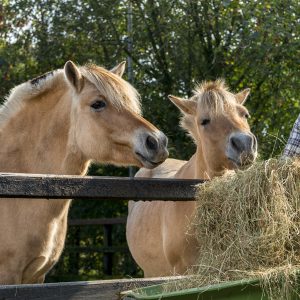
How species and growing conditions impact sugar levels in hay
Depending on where you live, it can be very hard to find hay that is low enough in sugar to be safe for sugar-sensitive horses. Keeping an open line of communication with your local hay producer can help identity lots of hay that have the potential for being lower in sugar based on species and environmental conditions around baling time.
Top 4 reasons for high sugar in hay:
- Hay is harvested from a field populated with high sugar-producing species.
- Cold evening temperatures occur prior to baling.
- Nutrient deficiencies slow growth and increase sugar accumulation.
- Drought stress slows growth and increases sugar accumulation.
Instances where the sugar content in the hay may be lower:
- Hay that contains warm season grasses are typically lower in sugar. The species of grass grown in a field is dependent on the growing zone.
- Hay baled after a period of cloudy weather will be lower in sugar. Research shows that hay baled after a two-week period of cloudy weather is significantly lower in sugar.
- Grasses that grow in shady areas are lower in sugar.
- Hay cut early in the morning is lower in sugar.
- Properly fertilized grass is lower in sugar because it grows at a more normal rate. Hay grown in deficient soils grows slower and accumulates more sugar.
Regardless of species or growing conditions, it is a good idea to test any hay you have purchased for sugar-sensitive horses.


